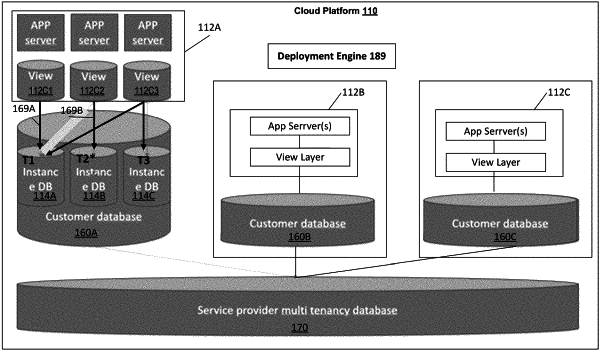| CPC G06F 16/2358 (2019.01) [G06F 16/24565 (2019.01); G06F 16/256 (2019.01); G06F 16/27 (2019.01)] | 18 Claims |

|
1. A system, comprising:
at least one data processor; and
at least one memory storing instructions, which when executed by the at least one data processor, result in operations comprising:
detecting, by a deployment engine of a multitenant cloud platform, a first database table at a first database instance and a second database table at a second database instance, the first database table and the second database table both including a set of data, the set of data being a same data for both the first database table and the second database table;
in response to the detecting, deploying, by the deployment engine of the multitenant cloud platform, the first database table and the second database table, such that the first database table is deployed with the set of data being the same data for the first database table and the second database table, and the deployed second database table comprises a virtual table linked to the set of data of the first database table, wherein the virtual table is created as a database view logic at a service interfacing the first database table and the second database table, wherein the database view logic at the service is configured to respond to a query towards the second database table by performing a subquery towards the first database table in order to access the set of data located at the first database table at the first database instance; and
deploying, by the deployment engine of the multitenant cloud platform, a first trigger to the first database instance and/or a second trigger to the second database instance to detect whether a request is received to perform a change to the set of data at the first database table at the first database instance and/or the second database table at the second database instance.
|